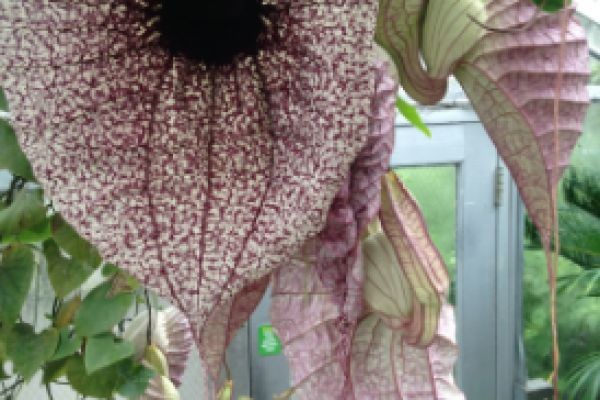The genus Aristolochia includes approximately 350 species of perennial climbing herbaceous and shrubby, evergreen and deciduous plants. These cultures are characterized by single and grouped flowers of original shape, curved-tubular, without clearly marked calyx and corolla.
Aristolochia is used for vertical gardening, decoration of walls, trellises and pergolas. They can also be grown in pots on balconies and terraces, especially elegant aristolochia. In moderately cold climates, plants are insulated for the winter: after pruning in autumn, the vine is laid on the ground and covered with insulation material or snow.
Plants are planted permanently in September (if the winter is cold) or in April. They prefer loose, nutritious soil. During planting, it is recommended to apply organic fertilizers. When growing in a pot, use fertile land (2/3) and peat (1/3) with the addition of a complex fertilizer at the rate of 30 g per bucket of soil. Then, once a month, a complete mineral fertilizer is added to the water for irrigation in the amount of 10 g per bucket. Young plants are pruned immediately after planting, which contributes to better tillering - the branches are shortened by about a third of their length.
Spring and summer should be watered abundantly and regularly, primarily potted plants. In autumn and winter, it is enough to keep the soil slightly moist.
Aristolochia can be transplanted even annually, in the spring. If the size of the pot is large, it is recommended to limit yourself to replacing the surface layer of the earth
Aristolochia can be planted both in the open sun and in partial shade.
There are stable species-large-leaved aristolochia and clematis aristolochia, which tolerate temperature fluctuations well, as well as gentle ones (elegant aristolochia and three-lobed aristolochia), which cannot withstand temperatures below 10 °C.









